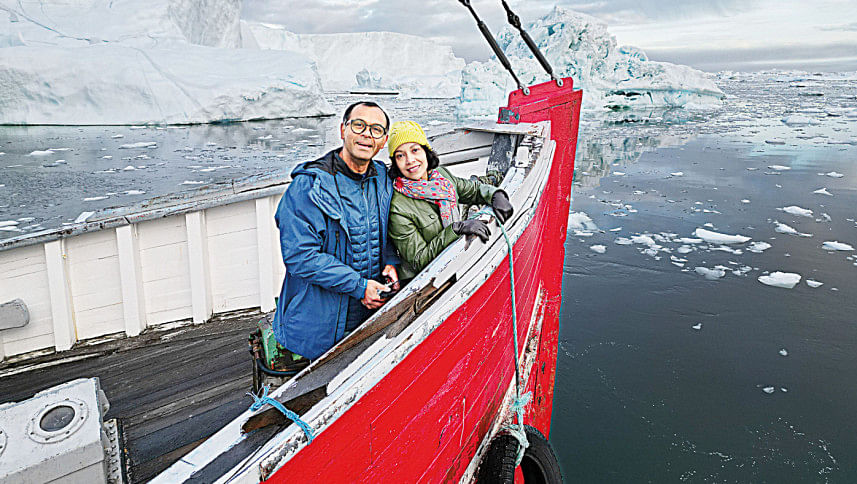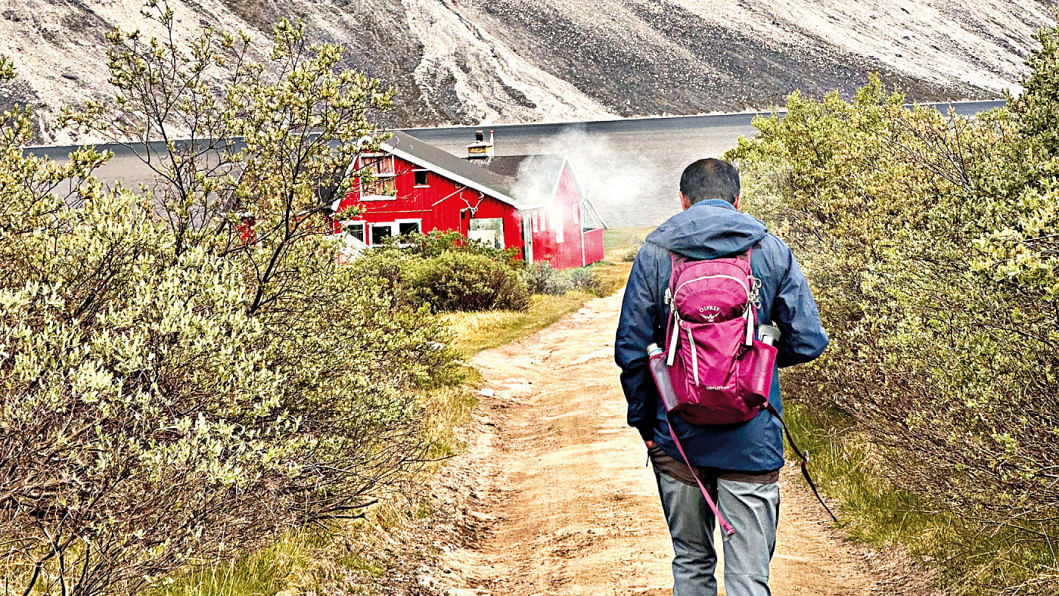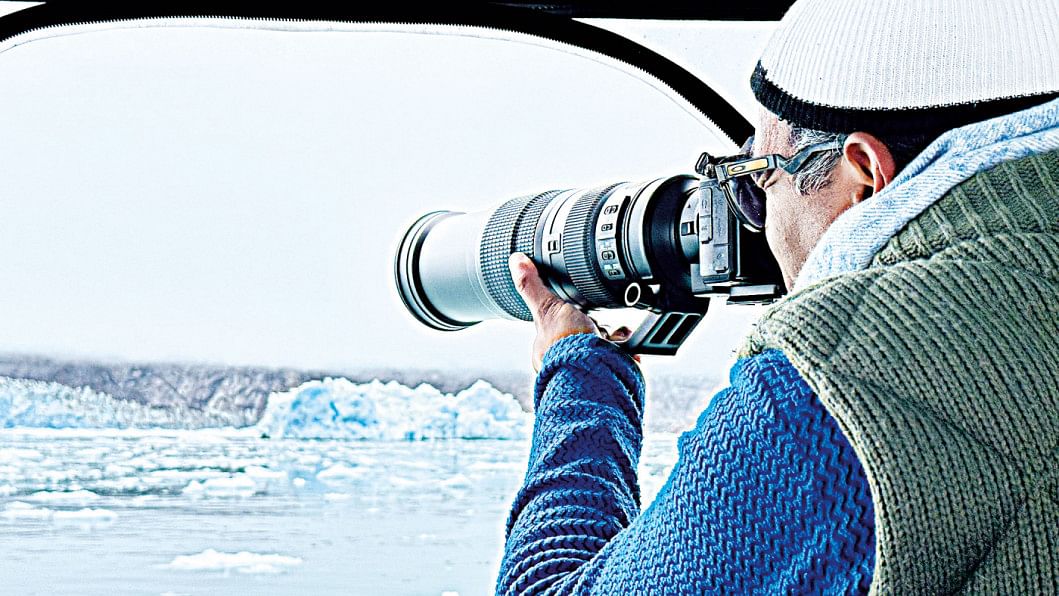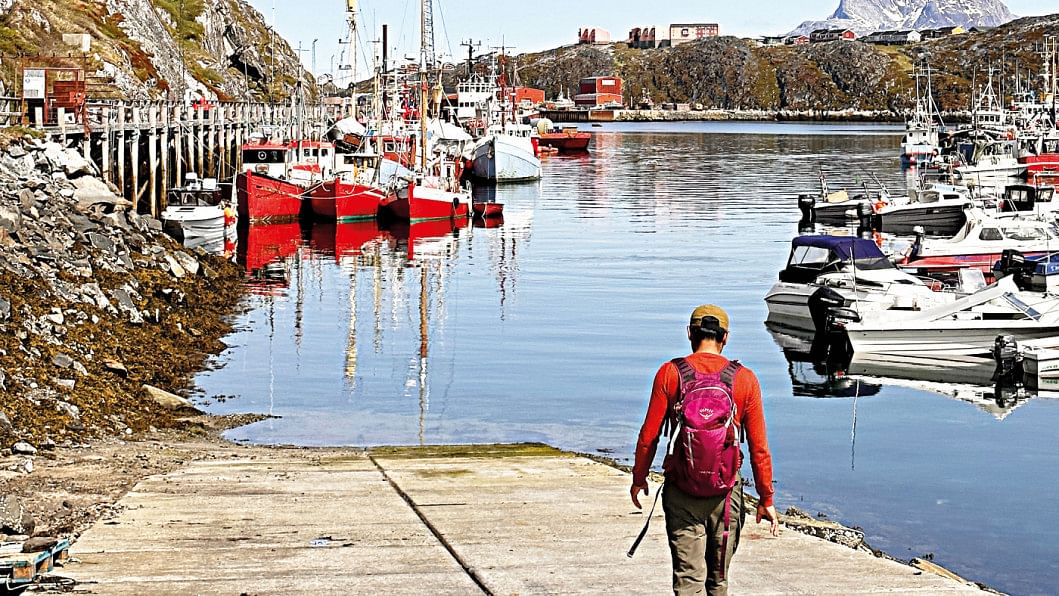Arctic Circle: A trip to the land of glaciers
How vast is our planet? The answer may lie in how we perceive it. On the grand cosmic scale, the earth is minuscule, a mere speck invisible even under the most powerful microscope. However, on a human scale, it is truly enormous.
Just a few hundred years ago, most people lived within fifty miles of where they were born. Only an extraordinary brave few dared to explore beyond. Then, around a hundred years ago, commercial airplanes changed everything. Now, if you have the means, you can cross the world in a matter of hours. Thanks to the internet and IT advancements, we have access to knowledge that scholars of the past could only dream of.
Not long ago, the idea of going to the North or South Poles was a daring dream. But now, even luxurious ships can glide through icy waters, making it possible for those who aren't risk-takers to explore these places.

My partner, Sarmin, and I were inspired after visiting Antarctica 18 months ago. Our desire to see the North Pole grew stronger since then.
After months of planning, in July 2023, we set off on our journey to "North Pole". While the South Pole is defined by the massive land of Antarctica, the North Pole is different. It's not a piece of land; it's an imaginary point in the Arctic Ocean, covered in ice during winter and undergoing big changes in summer. Our goal was to reach the Arctic Circle, the gateway to the North Pole.
The Arctic Circle spans parts of eight countries: Alaska (USA), Siberia (Russia), Northern Canada, Northern Norway, Sweden, Finland, and Greenland. We chose to visit Greenland and experience the Arctic Circle from there.

Greenland, the world's biggest island, is where North America's geology meets Europe's politics. As an autonomous region of Denmark, you can reach Greenland by flying from Denmark or sometimes from Iceland. It's as large as Western Europe, and a remarkable 80% of it stays icy all year round, except for a small part in the south. Surviving the freezing winters there is tough, yet the resilient Inuit people have managed to call it home. With only three people per 1000 square kilometers, Greenland has one of the lowest population densities on Earth.
The Inuit, Greenland's indigenous people, have roots going back centuries to Siberia. Today, their population is a mix of Inuit, Danish, and European heritage. The native name "Inuit Nunaat," meaning "land of the people," contrasts with the name "Greenland," which Vikings came up with to attract settlers with the promise of green lands.
Our journey to the North Pole was a costly endeavor. Planning started seven months in advance, exploring various Arctic expedition options. While expedition cruises seemed convenient, they came with a hefty price tag—around $25,000 for both of us, depending on the cruise and route. We opted for a more personal approach, meticulously arranging flights, accommodations, explorations, and hikes. Our adventure began in Boston, USA, with a layover in Iceland before landing in Nuuk, Greenland's capital. Four days of exploration followed, ending in Ilulissat, Greenland's popular tourist hub.
Instead of hotels, we preferred local Airbnb apartments or homes. Our past experiences with over thirty Airbnb stays in twenty countries made sure that we took the right decision.

Boat tours were central to our Greenland experience. Without big cities or intricate roads, we traveled between towns by boat or small aircraft. The government's tourism portal offered a wealth of seasonal activities, accommodations, and local tour operators. It helped a lot in making our own itinerary.
During our stay in Greenland's two towns, we embarked on four remarkable boat tours.
Whale Watching: Watching majestic whales in their natural habitat was incredible. In summer, various whale species gather in Greenland's icy fjords and bays, making short boat trips a guarantee for breathtaking sightings.
Catch and Cook: A six-hour adventure combined fishing with delicious food. The abundant fish population provided an exceptional fishing experience. Visiting a remote island with a seasonal restaurant allowed us to taste amazing fish dishes.
Disko Bay, Ilulissat: Known for its captivating iceberg imagery, Disko Bay in Ilulissat has emerged as a magnet for visitors. The dynamic Ilulissat Glacier is advancing at a rapid speed of 100 feet daily. Daily ice calving releases a staggering 20 million tons of icebergs into the sea. The ethereal ice fjord painted an otherworldly tableau, best savoured while gliding serenely through calm waters, bathed in the golden embrace of the sun. Opting for a more personalised experience, we privately rented a vintage Danish boat from the 1970s. Equipped with a camera and drone, we set forth through Disko Bay, capturing indescribable beauty through our lenses and drone.

Eqi Glacier: An entire day's expedition led us on a nearly seventy-kilometre boat ride from Ilulissat to explore Greenland's most active glacier, Eqi Glacier. We opted for a smaller speedboat for the ride as navigating a large boat through an iceberg-strewn sea presents its own challenges. Eqi Glacier's dynamic nature ensured the spectacle of icebergs calving from towering heights. Maintaining a safe distance was paramount due to the accompanying waves and unpredictability. In a moment of exuberance, I launched my drone to capture the scene, inadvertently leading to the drone's loss. While a pang of regret washed over me momentarily, I was delighted when my digital pet sent back all the content it captured. The splendor of the glacier's grandeur proved an invaluable consolation too.
Standing on a small boat in the vast Arctic Ocean makes you feel incredibly small. For a brief moment, I felt a deep connection with Mother Nature—a connection that has driven my travels around the world.
This journey was about more than just experiencing nature; it was about turning dreams into memories. Memories that fill the pages of a beautiful album called life.


 For all latest news, follow The Daily Star's Google News channel.
For all latest news, follow The Daily Star's Google News channel. 

Comments